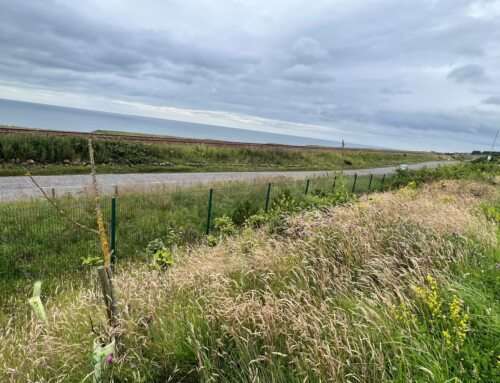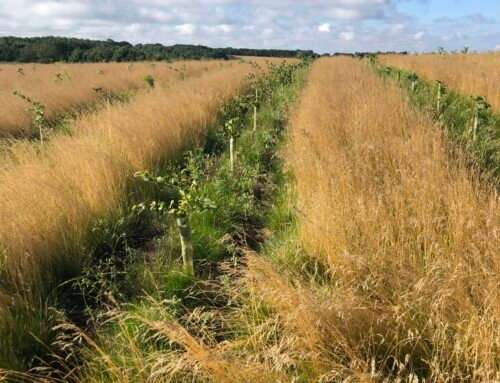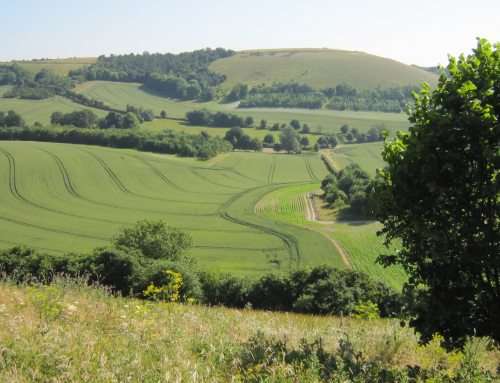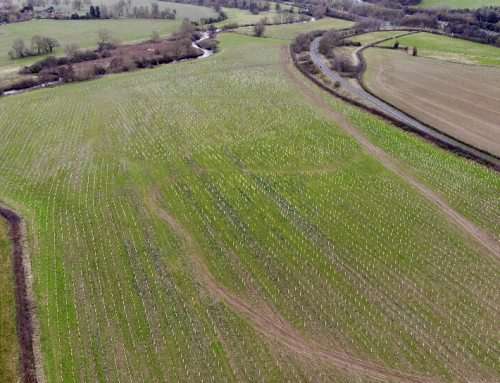Woodland Creation On Derelict Land
Site: Hartcliff Rocks Quarry, Bristol
Client: Wanderlands
Departments Involved: Forestry, Soils
Overview
Hartcliff Rocks Quarry is a 7ha pasture site which previously was a quarry filled with inert materials. Comprehensive soil testing identified that the site was suitable for tree planting. The soil was prepared through subsoiling and a species-rich woodland was planted. The planting was successful, with a 76% survival rate after the first year. A thriving case study to inspire future woodland creation of landfill sites.
Context
Wanderlands received a grant from The Mersey Forest to create a woodland at Hartcliff Rocks Quarry. The site was a selected vacant and derelict land site suitable for woodland creation. Hartcliff Rocks Quarry is located south of Bristol, Somerset. The site is 7ha and slopes down to damp soil in the south. A distinguishing feature is the sandstone cliff face of Hartcliff Rocks Quarry. This feature is an SSSI which is visible in the north and then is hidden underground to the east. The site was a former quarry which was then filled with inert waste. The shape of the woodland was carefully designed by Wanderlands. Nicholsons was consulted to carry out soil surveys, manage woodland creation and register the woodland under the Woodland Carbon Code.



Challenges
Challenges were faced throughout the project. The design was carefully sketched so woodland avoided the underground SSSI. This area will be a large glade where wildflowers will thrive.
The pasture field was previously a landfill. Therefore, during subsoiling, inert material became a problem for machinery. Additionally, wet weather conditions added extra pressure to the task. Innovative solutions through Nicholsons’ collaboration with contractors enabled changes in machinery and a realistic step-by-step method. In turn, the soil was subsoiled to the required depth for successful tree growth.
What We Did
Nicholsons carried out a field survey and established alkaline heavy clay loam soil over a clay subsoil, with stone content increasing down the soil profile. Laboratory tests analysed acceptable soil nutrients and organic matter for plant growth, with safe concentrations of phytotoxic metals (i.e., copper, zinc, and nickel).
Four soil types were identified across the site, and tree species were decided accordingly. An additional soil test was conducted to determine baseline organic carbon stocks in the soil across the site. Extensive research allowed Nicholsons to predict the soil carbon increase from different changes in land use. In the next 10 years, it is estimated that the site’s soil organic carbon stocks will increase by 38 tonnes.
The land was subsoiled to prepare for planting. Subsoiling was a requirement of The Mersey Forest grant, to aerate the soil and enable water and roots to travel deeper into the compacted clay. This was carefully monitored by Nicholsons, and a range of techniques were trialled, including using a D6 and challenger. A tracked excavator was used to remove surface stone and debris, ready for planting and future mowing.
Nicholsons marked out the design across the site and collaborated with a contractor who planted 9,910 trees/shrubs in guards. Trees included major broadleaves (e.g. sessile oak, hornbeam, sycamore), minor broadleaves (e.g. willow where soil moisture is wet), alternative broadleaves (e.g. London plane) and shrubs (e.g. hazel). The management of the woodland was organised by Nicholsons, including weed control, mowing and beat-up.

Outcomes
The woodland is registered on the Woodland Carbon Code, which will focus on the carbon sequestrated by the woodland and includes regular monitoring of growth.
Hartcliff Rocks Quarry is a case study for future landfill woodland creation projects. Tree failure rates were low considering the challenging soil conditions. This site will become a stunning diverse woodland containing over 30 species of trees and shrubs, with glades flourishing with wildflowers.
Highlights
- Soil surveys established that the site was suitable for woodland growth, with a predicted soil carbon sequestration potential of 38 tonnes.
- Achieving subsoiling depths of between 55-70cm depth.
- Successful woodland planting on a previous quarry and landfill site, with a failure rate of only 24%.






